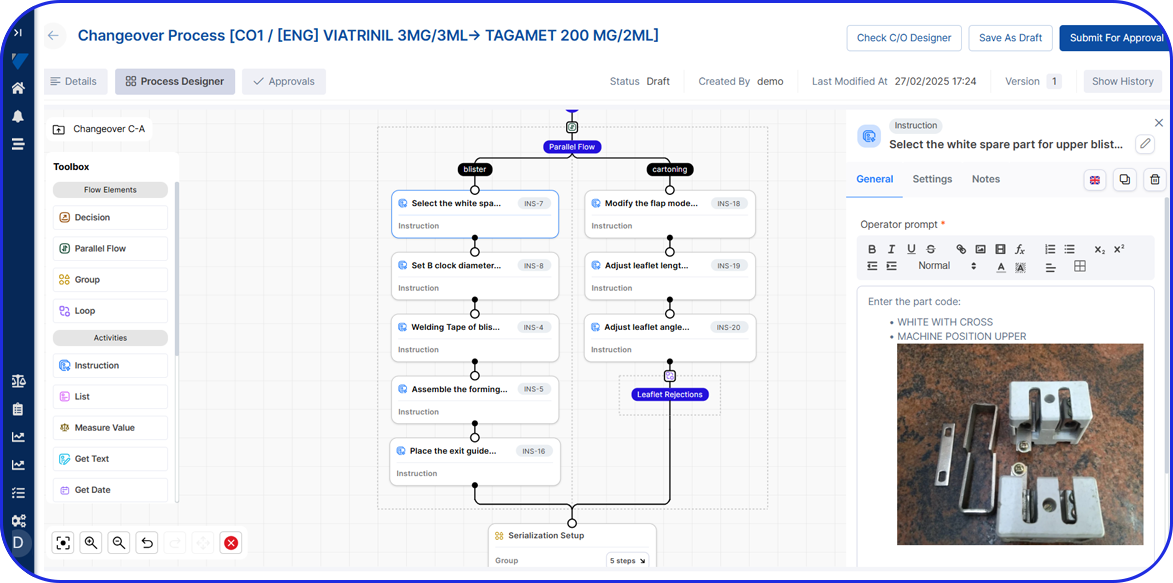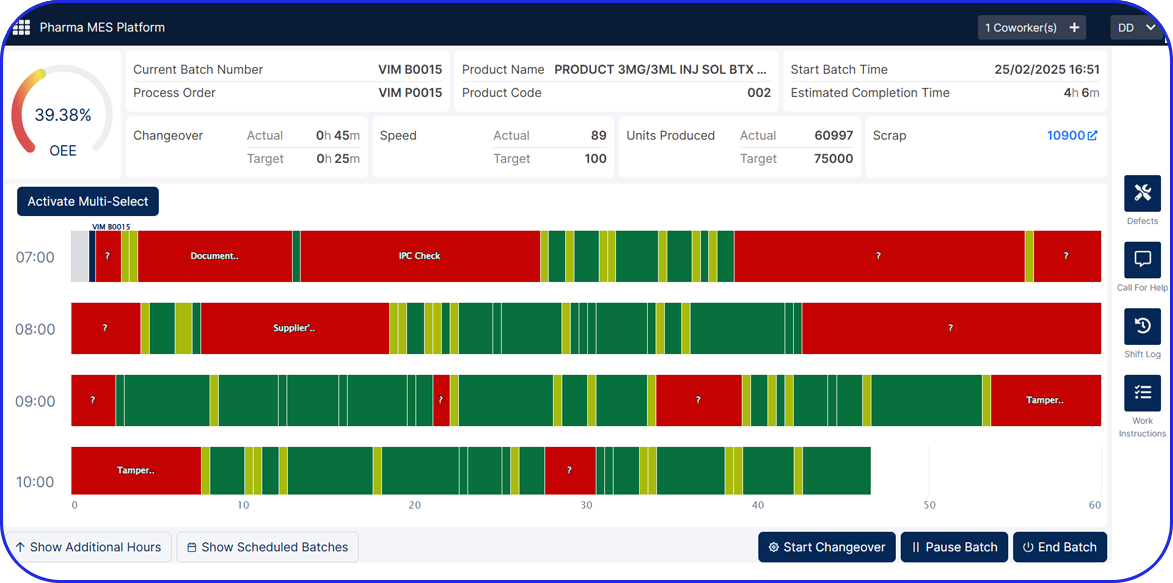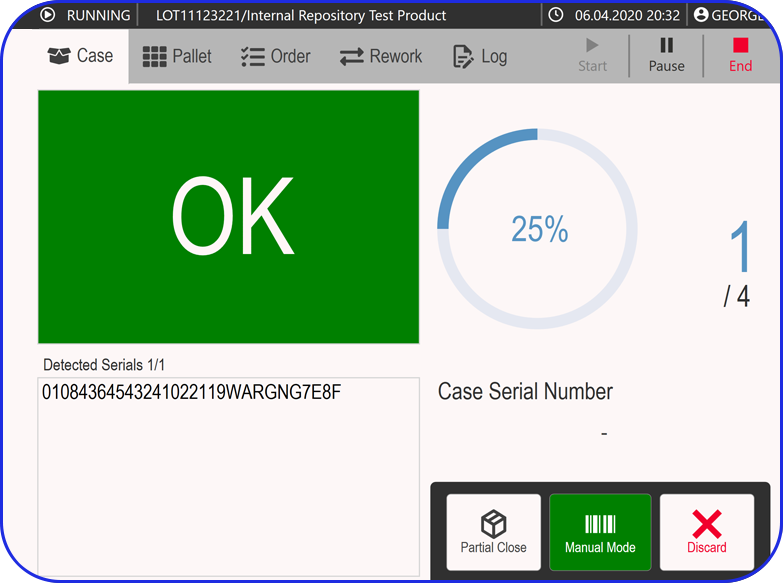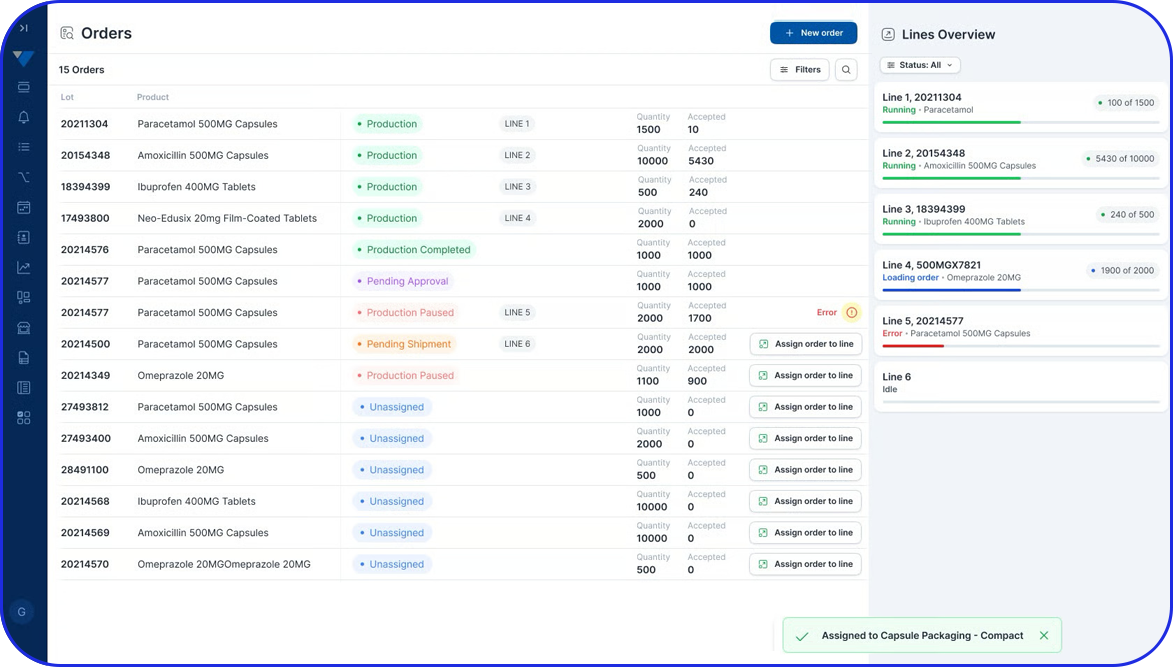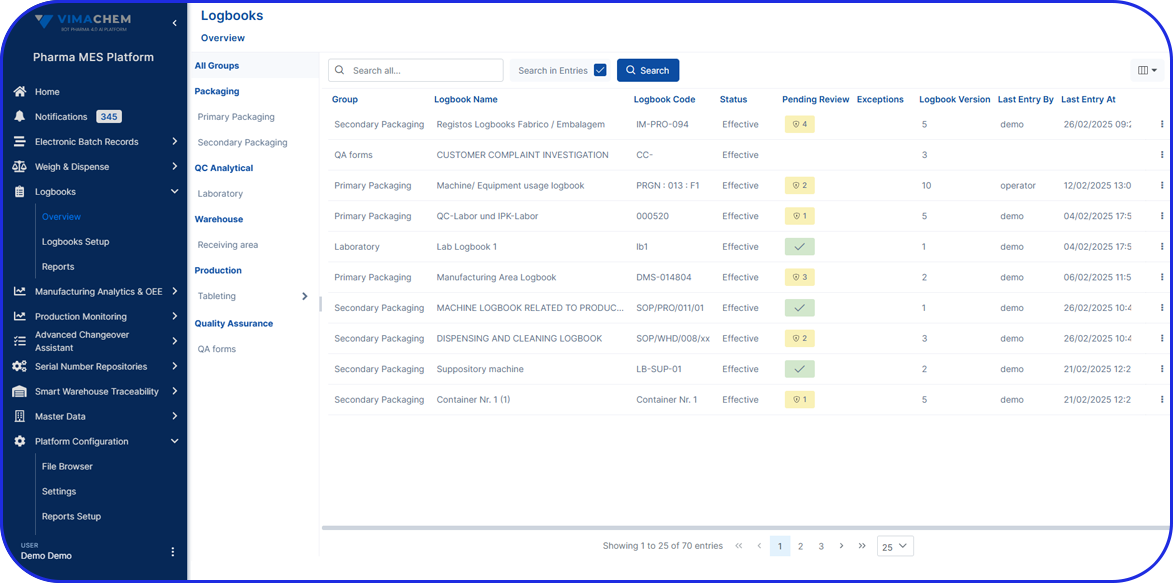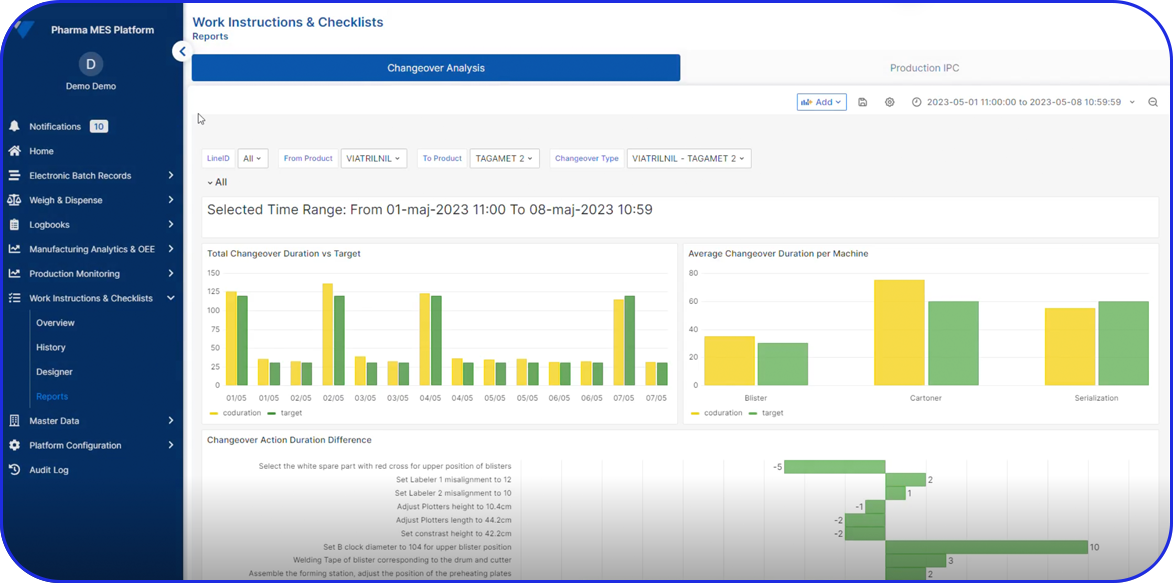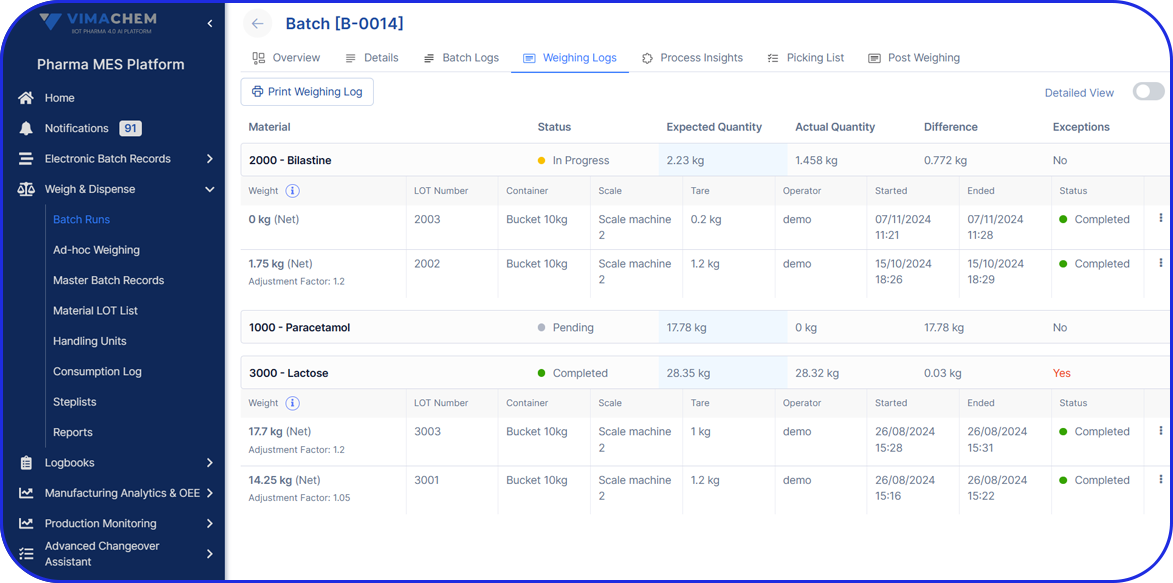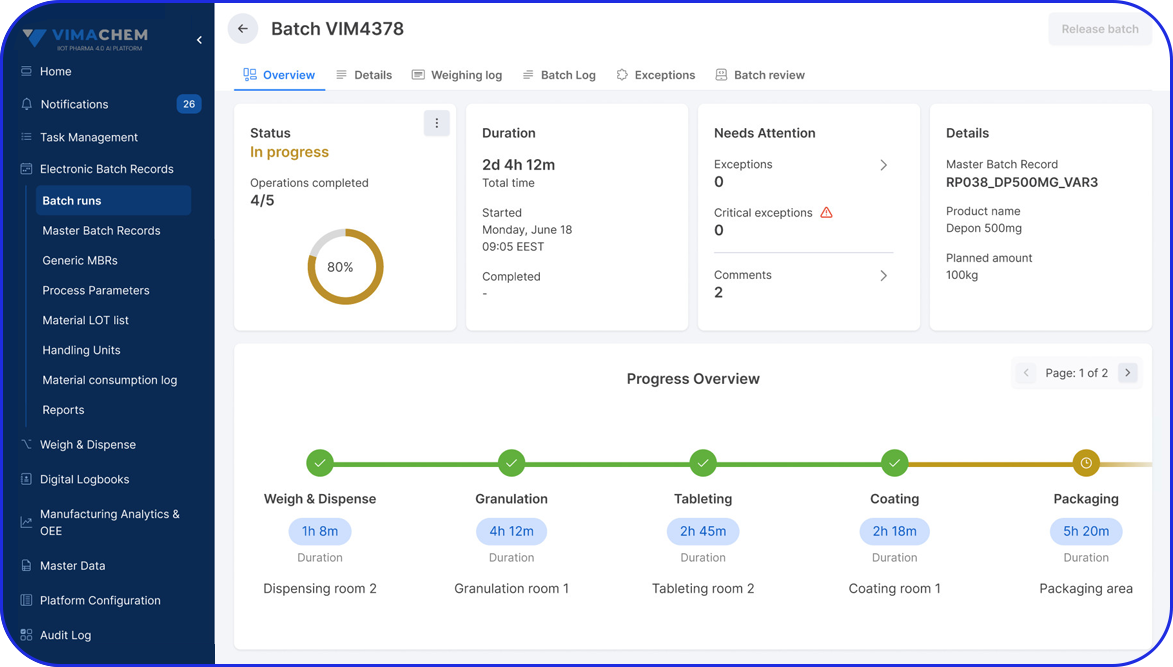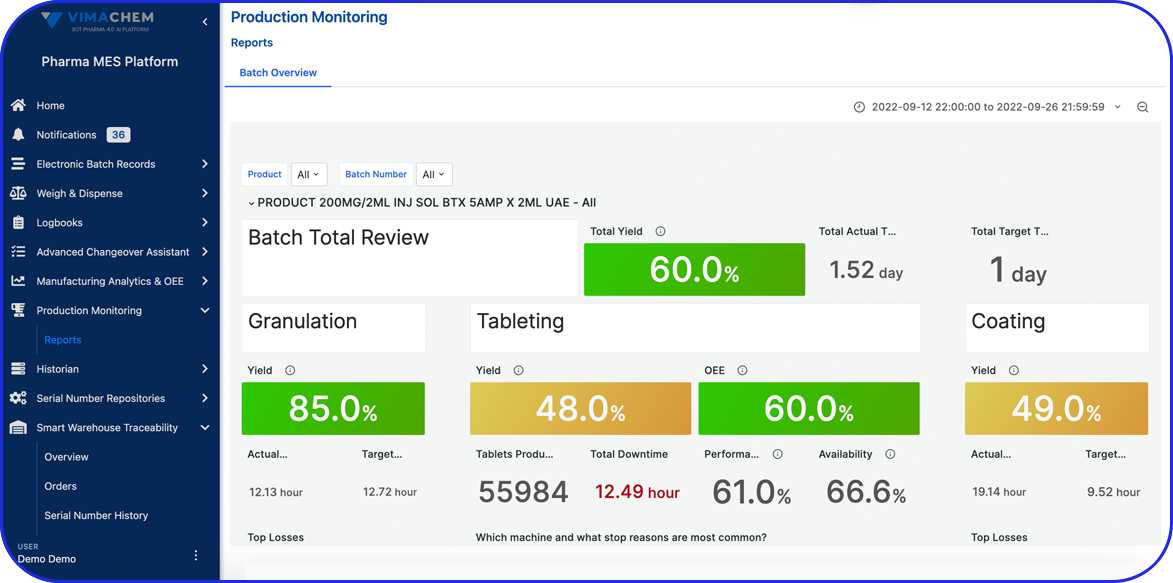The Hidden Factory in Pharma: Reducing Waste and Improving OEE
The Hidden Factory in Pharma: Reducing Waste and Improving OEE

George Gketsios
Senior Manager – Solution Consulting
What is the Hidden Factory?
The term “hidden factory” refers to the unnoticed or “hidden” parts of a manufacturing process that affect product quality or reduce the efficiency of the plant operation. The hidden factory is the set of activities within the process that reduce the quality or efficiency of a manufacturing process and is not apparent to managers or others seeking to improve the process.
The Hidden Factory and Its Untapped Production Capacity
The hidden factory represents the untapped capacity of your manufacturing plant and, thus, the loss of revenue. Fully utilizing your hidden factory means around-the-clock perfect production – manufacturing only finished products as efficiently as possible, with no downtime, every hour of every day.
Hidden factories, as the name implies, are difficult to spot. They are the product of a series of minor, unplanned modifications and the culture that develops around them. Since enterprise resource planning tools are fitted to hidden factories rather than being employed to deactivate them, it then penetrates the operations architecture.
To be able to “see” the hidden factory in an organization, you need to learn what waste is and understand that waste in any business, manufacturing, or service can have a significant negative impact on the bottom line, top line, employee morale, shareholders, and, most importantly, the customer. Many manufacturers are surprised to learn that they have more capacity in their hidden factories than they are using in their actual factories. The hidden factory represents the untapped production potential within your current plant.

Hidden Factory Examples
The hidden factory concept appears in many forms across industries, silently reducing productivity and efficiency. Below are some common ways inefficiencies remain undetected.
Rework and Scrap: The Cost of Quality Issues
Undetected defects and inconsistencies lead to rework and material waste, consuming time and resources that could be allocated to efficient production. This not only increases costs but also lowers overall throughput.
Machine Downtime: The Accumulated Impact of Small Stoppages
Minor, unmonitored machine stoppages may seem insignificant, but over time, they add up to major production losses. Equipment failures, slow cycle times, and unplanned maintenance reduce manufacturing efficiency.
Underutilized Labor: Inefficiencies in Workforce Management
Poorly structured workflows lead to idle employees, as unnecessary waiting times between tasks decrease productivity. Ensuring a well-balanced production schedule helps eliminate wasted labor hours.
Unoptimized Supply Chain: Bottlenecks That Disrupt Production
Supply chain inefficiencies, such as delayed material deliveries or inefficient inventory management, can disrupt factory operations. These bottlenecks lead to inconsistent production schedules and increased downtime.
Why Discovering the Hidden Factory is Crucial for Manufacturing
Preventing Profit Loss
Ignoring the hidden factory in the manufacturing process can lead to a significant loss of profitability. When wasteful processes remain unchecked, valuable resources are consumed that should otherwise be allocated to the factory floor. This misallocation of resources directly impacts the bottom line by increasing production costs and reducing overall efficiency.
Optimizing Capital Allocation
Failure to address the hidden factory diverts capital into unnecessary new manufacturing equipment. This misdirected investment absorbs working capital that could be better used to improve processes, drive operational enhancements, and grow the business. By focusing on uncovering and eliminating hidden inefficiencies, manufacturers can redirect funds toward more productive initiatives.
Enhancing Throughput Without Extra Investment
One of the hidden factory’s most important advantages is its potential to improve throughput without the need for further capital investment. By tapping into the existing untapped production capacity, manufacturers can:
Reduce Outsourced Production: Minimizing reliance on external production helps keep the manufacturing process in-house and more controlled.
Increase Efficiency: Streamlining operations and eliminating waste leads to better use of current assets and personnel.
Boost Profitability: Improving throughput with the existing infrastructure directly enhances revenue and competitive positioning.
Overall, discovering the hidden factory allows manufacturers to unlock untapped production capacity, ensuring that every resource is optimized for maximum efficiency and profitability

Benefits of unlocking the hidden factory
Boosting Throughput Without Additional Investment
The primary advantage of uncovering hidden factories is the ability to increase production output without requiring new capital investment. Instead of expanding operations or purchasing additional equipment, manufacturers can optimize existing processes to maximize efficiency and productivity.
Enhancing Product Quality
By identifying and eliminating inefficiencies, manufacturers can reduce defects and inconsistencies, leading to higher product quality. A well-optimized production process ensures that fewer resources are wasted on rework or discarded materials.
Optimizing Cost Allocation
Unlocking the hidden factory allows fixed costs to be distributed across a higher production output. This reduces per-unit costs, improving overall profitability and making better use of available resources.
Improving Capacity Planning
Gaining visibility into previously unnoticed inefficiencies enables manufacturers to enhance capacity planning and resource allocation. With a clearer understanding of hidden production potential, companies can improve forecasting and scheduling.
Maximizing Existing Plant Throughput
Addressing hidden inefficiencies ensures that current manufacturing plants operate at peak performance. By removing bottlenecks, reducing downtime, and optimizing workflows, businesses can increase overall throughput without major operational changes.
Using Digital Innovations to Unlock the Hidden Factory
The main advantage of uncovering hidden factories is the increased throughput without additional capital investment. Simply put, it’s about getting more out of what you already have. The benefits of unlocking hidden factories are high and include improving quality, allocating fixed costs to increasing output, improving capacity planning, and increasing the throughput of existing plants.
Digital innovations such as the Internet of Things (IoT), artificial intelligence (AI)/machine learning technologies, and hybrid systems can help businesses leverage the data they generate to increase profitability, manage quality, and achieve continuous improvement goals. Furthermore, they help businesses to address issues and implement solutions faster with new technology that notifies you when parameter limits or key performance indicator (KPI) control limits are exceeded. Integrating industry-leading KPI dashboards helps to track, trend, monitor, compare and improve ongoing operations.

Discovering the Hidden Factory Through Digital Transformation
The journey to discover the hidden factory is both exciting and difficult. It will test the continuous improvement mindset when striving to get a better understanding of waste in the manufacturing process, reducing waste and uncovering inefficiencies.
Unlocking the hidden factory should occur concurrently with digital transformation. Data collected by selected equipment with edge devices and IoT sensors is extremely valuable because it provides real-time, accurate information to help search for bottlenecks.
When combined with digital transformation, the changes made along the way are immediately measurable in real time. Managers can devote more time to process improvement at the start of a project because they can access data more quickly and accurately. Entire industries have sprung up to assist firms in mitigating the effects of the hidden factory.
How Calculating Overall Equipment Effectiveness (OEE) Helps Unlock the Hidden Factory
The Overall Equipment Effectiveness (OEE) KPI is the fundamental metric for determining how productive your projected production time is as a percentage. OEE is the gold standard for measuring manufacturing productivity. Overall Equipment Effectiveness (OEE) calculation in the production process has evolved into a great tool and industry-leading KPI for maximizing machine uptime. OEE is the gold standard for measuring manufacturing productivity.
This metric comprises critical data points such as Availability, Performance, and Quality. When you multiply each of these measurements (with availability just considering the projected production time), you get the overall efficacy of your equipment on the shop floor.
Simply put – it identifies the percentage of manufacturing time that is truly productive. OEE calculation can show the actual potential of your manufacturing equipment, and you may discover that investing in additional IoT devices and sensors, along with smart data analytics, can considerably enhance production capacity in a matter of months. This approach can save you money on pricey upgrades or replacement of manufacturing equipment that isn’t completely obsolete.
By measuring OEE and the underlying losses, factories gain important insights into how to improve the manufacturing process systematically. OEE is the single best metric for identifying losses, benchmarking progress, and improving the productivity of manufacturing equipment (i.e., eliminating waste) and helps manufacturers tap into the hidden factory. It can decrease overtime or eliminate outsourced production.
A smart factory can achieve long-term success and maintain a competitive advantage by making decisions based on performance data. As a baseline, OEE can be used to track progress over time when eliminating waste from any given production asset.
OEE is one part of a balanced approach to improving productivity, as solely focusing on OEE can lead to overproduction, running equipment beyond rated parameters, overstaffing processes, and other counterproductive behaviors.

How Vimachem Manufacturing Analytics & OEE Solution can Help you
The Vimachem Manufacturing Analytics & OEE solution specializes in finding inefficiencies and tracking the actual line speeds and other site data in real-time by leveraging Industrial Internet of Things (IIoT) connectivity. Monitoring and analyzing machine data will increase operational efficiency and performance, bring instant changes, and generate financial gains.
The data given by an IIoT-based Manufacturing Analytics & OEE application can be used to determine machine bottlenecks and the underlying reasons for all machine stoppages, increase operator knowledge of line performance, and give line supervisors rapid visibility into shift performance.
Using the IIoT-based Manufacturing Analytics & OEE application allows pharma manufacturers to track the production cycle’s time, output, and performance and compare batches and Stock Keeping Units (SKUs) to acquire valuable insights. This can help them understand the causes of scrap, rework, and first-pass yield and how they affect quality.
Collecting and analyzing this data allows for financial analysis and assists in driving investments that provide immediate value for the pharmaceutical manufacturing facility. As a result, OEE is enhanced instantly, resulting in initial profits that may be used later to justify larger investments and continuous improvement scenarios using OEE optimization scenarios.

Ready to Augment your Shop Floor Operations?
Ready to Augment your Shop Floor Operations?
Vimachem Manufacturing Analytics - OEE
The Manufacturing Analytics – OEE module is an intelligent Pharma OEE Cloud solution that allows you to collect, store and visualize data across your site / enterprise and apply AI algorithms to optimize production efficiency and product quality.

